 If your doctor has recommended that you undergo an endometrial biopsy, they have likely explained what to expect during the procedure. It is a relatively simple and straightforward process that will typically be carried out in your doctor’s office. It is quick and has few side effects, and it is considered a fairly noninvasive way to diagnose certain conditions.
If your doctor has recommended that you undergo an endometrial biopsy, they have likely explained what to expect during the procedure. It is a relatively simple and straightforward process that will typically be carried out in your doctor’s office. It is quick and has few side effects, and it is considered a fairly noninvasive way to diagnose certain conditions.
You have probably been instructed on what you need to do to prepare and what will happen during your appointment. However, you may be wondering what to expect after your biopsy. Here is a closer look at what comes next.
Immediately After The Procedure
After your doctor has removed tissue from your uterine lining for testing, they will remove the speculum and ask you to rest for several minutes before you can return home. Keep in mind that if you need some type of sedative for the procedure, you should ask someone else to drive you home afterward. However, this procedure is carried out without a sedative in most cases. If you are unsure, clarify this with your doctor ahead of your appointment so you can make the necessary arrangements.
After your biopsy, your doctor will tell you when you should receive your results or get additional treatment and care.
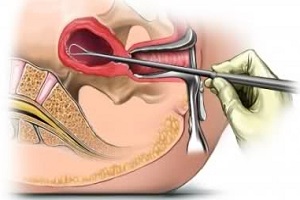 It is normal to experience light bleeding after the procedure and in the few days following it. You may want to bring a sanitary pad with you to wear home; tampons should not be used in the days following the procedure.
It is normal to experience light bleeding after the procedure and in the few days following it. You may want to bring a sanitary pad with you to wear home; tampons should not be used in the days following the procedure.
You may also want to take a pain reliever after your biopsy if you were not instructed to take one beforehand by your healthcare provider. Keep in mind that some pain medicine, such as aspirin, may increase your chance of bleeding. Therefore, it is important to only take the painkillers that your doctor recommends.
It is essential to avoid using tampons, douching, or having sexual intercourse in the three days following an endometrial biopsy. However, your healthcare provider may instruct you to avoid certain activities for a longer time. You may also be advised to avoid heavy lifting and strenuous activity for a certain amount of time.
Side Effects To Look Out For
It is normal to experience cramping, pain, and light bleeding in the days after your procedure. However, there are some less common effects that may occur. If you experience any of the following symptoms, contact your doctor right away.

- Excessive bleeding
Fever
Chills
Severe lower abdominal pain
A foul-smelling drainage from the vagina
Depending on your particular medical situation and the concerns that prompted the biopsy, your physician may provide you with additional instructions on what is normal and what is cause for concern following your procedure.
What Happens Next?
After your doctor has collected the samples in your endometrial biopsy, they will send the cells to a lab for further testing. The amount of time it will take to receive your results varies depending on the lab being used and the types of tests being conducted on your cells. Your doctor should advise you on how long you can expect your results to take before you leave your appointment.
You may feel nervous while waiting to hear your pathology results. Keep in mind though that not all endometrial biopsies point to cancer. In fact most endometrial biopsy results are benign. Suspected endometrial cancer is just one reason your doctor may have ordered the procedure; it could also be used to uncover the cause of abnormal bleeding, such as polyps or benign growths known as uterine fibroids.
Although it may be difficult, try not to panic while waiting for your results. Keep in mind that eating a healthy diet, exercising regularly once you can resume physical exertion, and getting enough sleep can help keep you in the best shape possible physically as well as mentally while you await further news.
Reach Out To Raleigh Gynecology And Wellness
The experienced women’s healthcare professionals at Raleigh Gynecology and Wellness can answer any questions you have about what to expect before, during, and after your endometrial biopsy and related procedures. Give us a call today for more information or to book your appointment.

 An
An  You should wear comfortable clothes to your appointment; avoid wearing anything that is too tight. Be prepared to provide a urine sample for a pregnancy test and have your blood pressure checked before the procedure gets underway. Although you may be nervous, it is important to eat something before your appointment to avoid feeling faint during the process.
You should wear comfortable clothes to your appointment; avoid wearing anything that is too tight. Be prepared to provide a urine sample for a pregnancy test and have your blood pressure checked before the procedure gets underway. Although you may be nervous, it is important to eat something before your appointment to avoid feeling faint during the process. 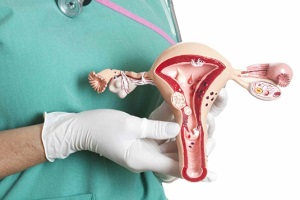
 An
An  If you need help managing the pain, you can use over-the-counter pain medications such as ibuprofen, naproxen, or acetaminophen, being sure to follow the dosing instructions on the label. It is not advisable to take more than one type of pain medication at the same time.
If you need help managing the pain, you can use over-the-counter pain medications such as ibuprofen, naproxen, or acetaminophen, being sure to follow the dosing instructions on the label. It is not advisable to take more than one type of pain medication at the same time. For example, if you have severe bleeding, which means soaking through a pad every hour for two or more hours, it could be a sign of an infection and requires immediate care. If your bleeding is accompanied by a foul odor, be sure to mention this to your doctor as well.
For example, if you have severe bleeding, which means soaking through a pad every hour for two or more hours, it could be a sign of an infection and requires immediate care. If your bleeding is accompanied by a foul odor, be sure to mention this to your doctor as well.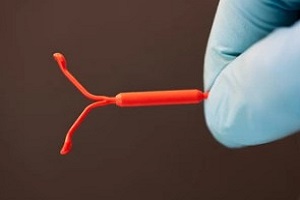 When it comes to preventing an unwanted pregnancy, women have lots of options to choose from. Some, like birth control pills, are easy to get started, but the need to remember to take your pill at the same time each day leads some women to seek more hands-off options. One popular approach is an
When it comes to preventing an unwanted pregnancy, women have lots of options to choose from. Some, like birth control pills, are easy to get started, but the need to remember to take your pill at the same time each day leads some women to seek more hands-off options. One popular approach is an  Before your IUD is inserted, your doctor will ask you some questions pertaining to your medical history. They will also check your vagina, uterus, and cervix, and this may include STD testing. In some cases, your doctor will also offer you some medicine to numb your cervix or help to open it up in
Before your IUD is inserted, your doctor will ask you some questions pertaining to your medical history. They will also check your vagina, uterus, and cervix, and this may include STD testing. In some cases, your doctor will also offer you some medicine to numb your cervix or help to open it up in  Once your IUD has been placed correctly, you can enjoy an efficacy rate of more than 99 percent. Because you cannot forget to take it, unlike the pill, and operator error isn’t a factor, unlike condoms, there is little chance of an unwanted pregnancy.
Once your IUD has been placed correctly, you can enjoy an efficacy rate of more than 99 percent. Because you cannot forget to take it, unlike the pill, and operator error isn’t a factor, unlike condoms, there is little chance of an unwanted pregnancy.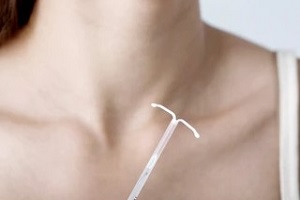
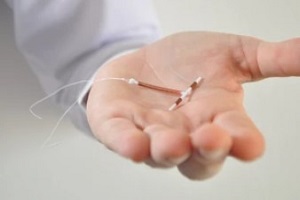 These IUDs do not contain any hormones and can be effective for up to ten years. Paragard is the most popular copper IUD brand in the U.S.
These IUDs do not contain any hormones and can be effective for up to ten years. Paragard is the most popular copper IUD brand in the U.S.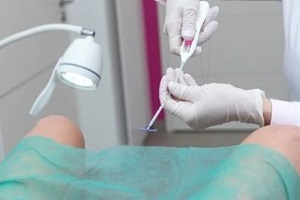 IUDs can sometimes get displaced, making their way further into the uterus or slipping down into the vagina. This is very rare, but you can check your
IUDs can sometimes get displaced, making their way further into the uterus or slipping down into the vagina. This is very rare, but you can check your